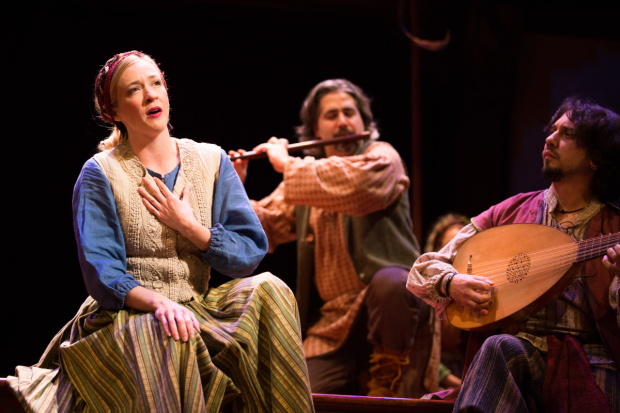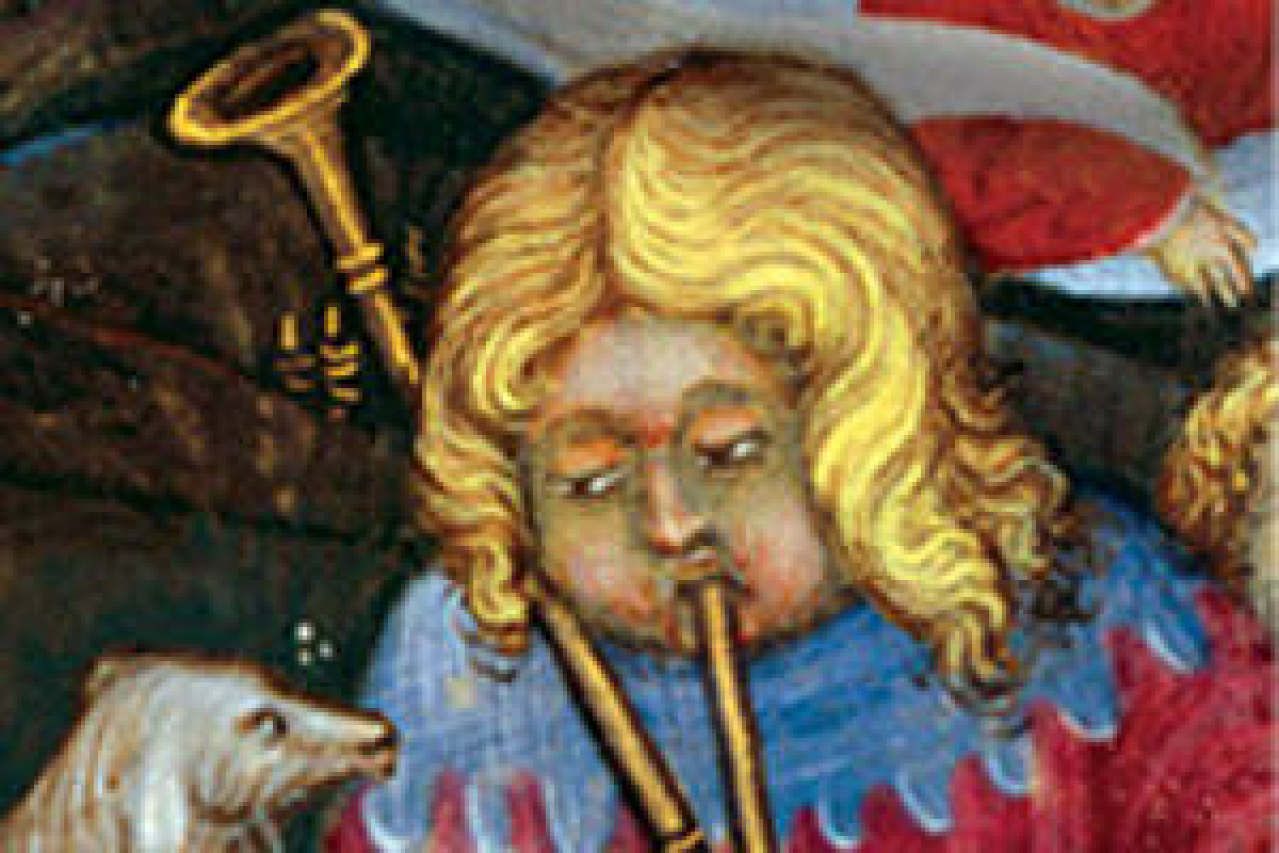The Second Shepherds' Play

(© Brittany Diliberto)
For its Christmas show, the Folger Shakespeare Theatre has chosen to revive a centuries-old gem that it first produced in 2007. The Second Shepherds’ Play is as funny as it is famous, as raucous as it is sacred. Unlike most visions of the Christ child being visited by three wise men, The Second Shepherds' Play tells the story from the point of view of three humble shepherds named Coll, Gib, and Daw, and reflects the life of peasants in medieval times.
The Second Shepherds' Play, the best known of 30-odd dramas that have survived from 16th-century Lancashire, is a short but rollicking comedy piece. The plot follows the lives of common folk: In addition to the shepherds, there is an untrustworthy character named Mak who steals a large sheep while the shepherds are sleeping and brings it back to his cottage where his wife, Gill, hides it in a cradle, pretending that she has just given birth.
The master stroke in this Folger production is that adapter and director Mary Hall Surface has paired the text with superb music from the Folger Consort. Before the action begins, and threaded through it, the Consort provides authentic instrumental motets, carols, songs, rounds, and dances from the 14th to 16th centuries, performed on lute, harp, a sweet-sounding forerunner of the bagpipe, an early trombone, and a viol da gamba.
At times the musicians perform alone, as in the anonymous lute piece "Sweet Was the Song the Virgin Sung." Sometimes they participate in the action of the play, as when they provide music for a dance executed by the actors. At all times, the musicians – Brian Kay, Daniel Meyers, and Robert Eisenstein (music director) – create a charming background against which the actors can act out their plot.
Louis E. Davis starts the action with passion as the shepherd Coll, grumbling about the cold and how hard the life of a shepherd is. He is followed by Matthew R. Wilson, who is excellent as Gib, expounding angrily on the demands of marriage and what a difficult, shrewish woman his own wife is. He ends by warning young men not to marry. The third shepherd, young Daw, is played very nicely by Megan Graves. He has his own complaints about life: He's tired of being hungry, and he doesn't like the way masters treat their servants.
Ryan Sellers performs the crafty, devious Mak very credibly. He is the first person everyone suspects when the sheep is discovered to be missing. Tonya Beckman is strong as his wife, Gill, a woman who is as willing to steal and cheat the shepherds, as is her husband. The cast is rounded out by three ensemble players: Danny Cackley, Malinda Kathleen Reese, and Lilian Oben.
Surface directs the play to move quickly. There are delightful touches in the way she reveals the plot without words. When Mak brings the sheep to his house, several actors hold up wooden outlines of mountains. Another actor holds a puppet dressed like Mak and portrays him traveling up and down the mountains, holding the sheep (Wilson, mask and puppet consultant; Aaron Cromie, puppet design). Later, when Mak is punished for stealing the sheep, the puppet is tossed up and down in a blanket.
Tony Cisek's set is reminiscent of the carts that were used as stages during the medieval times. Three elegantly decorated risers in the center of the Folger stage are used primarily for the musicians. The stage around the risers, the stairs to the stage, and the center aisle in the midst of the audience are all used as entrances for the actors. Choreographer Emma Jaster creates several lively, jubilant dances of the sort that a community in medieval England might enjoy.
The play's high point is the appearance of the Angel (Emily Noël) on the balcony above the Folger stage. Noël's clear and brilliant soprano announces the birth of Jesus Christ. Costume designer Adalia Tonneyck dresses her in a white and blue silk gown with a generous apron that cascades down from the balcony to the stage. Lighting designer Andrew Cissna highlights and then makes her disappear in an instant when her moment is through.
The Folger Theatre should be congratulated on this Second Shepherds' Play, which has captured the spirit of an era long ago and made it accessible to contemporary times, turning an ancient farce into a modern treasure with music, dance, song, and creative staging that can be enjoyed by audience-goers of all ages.











